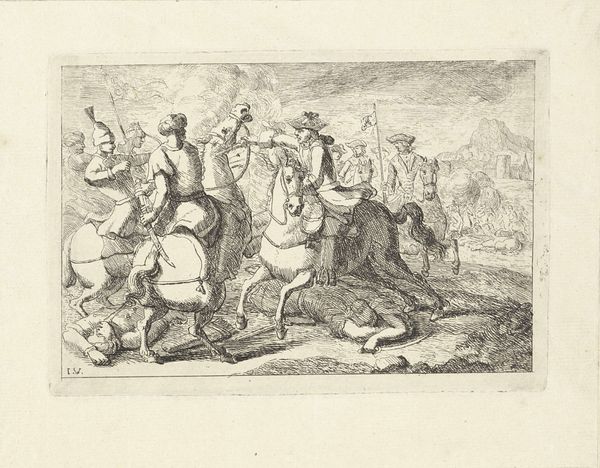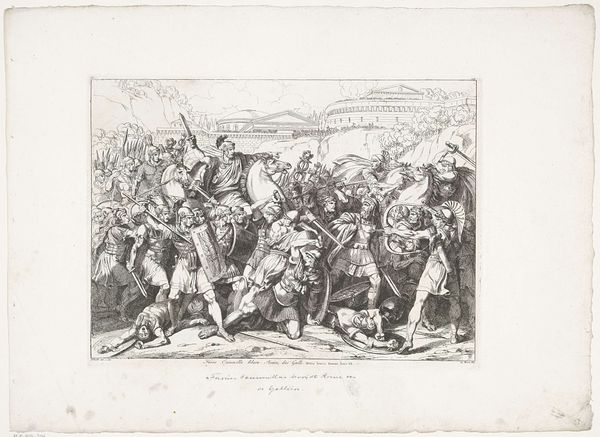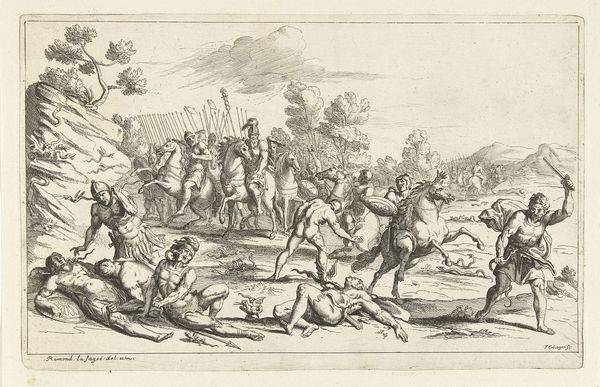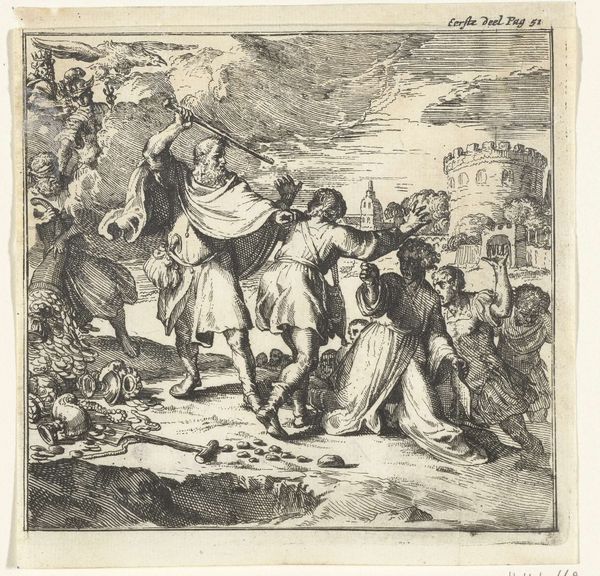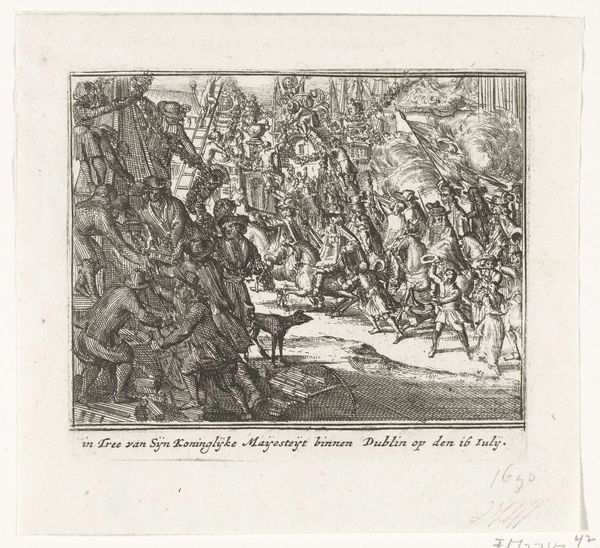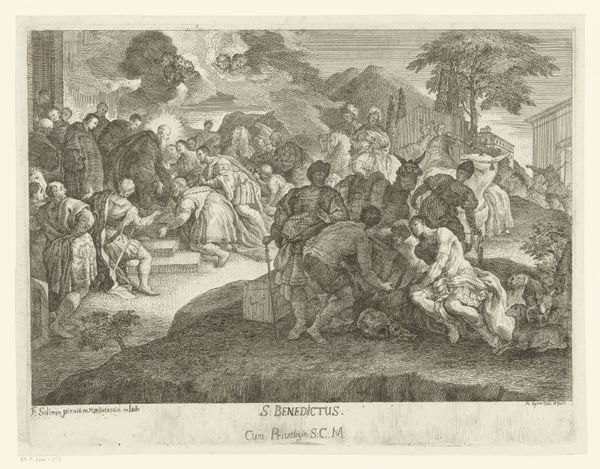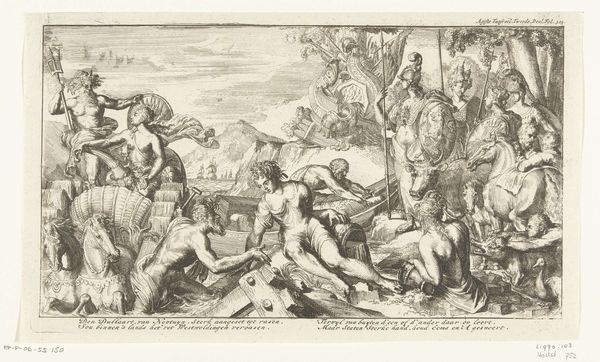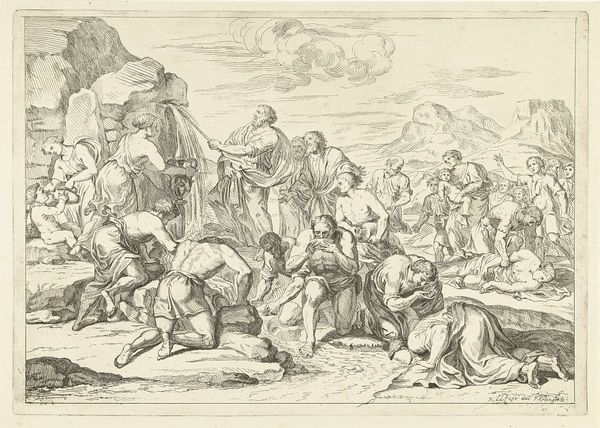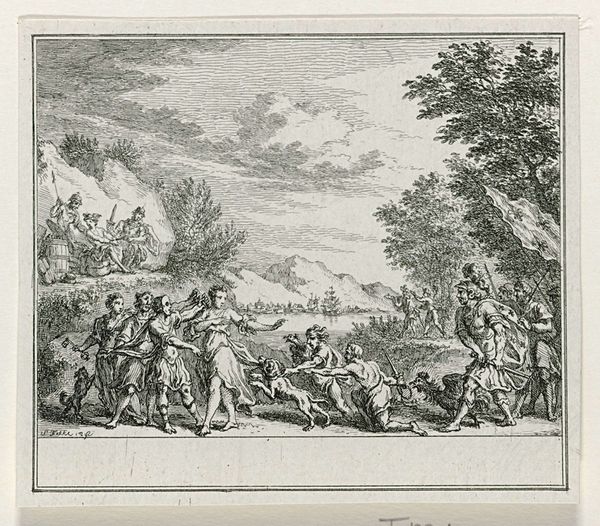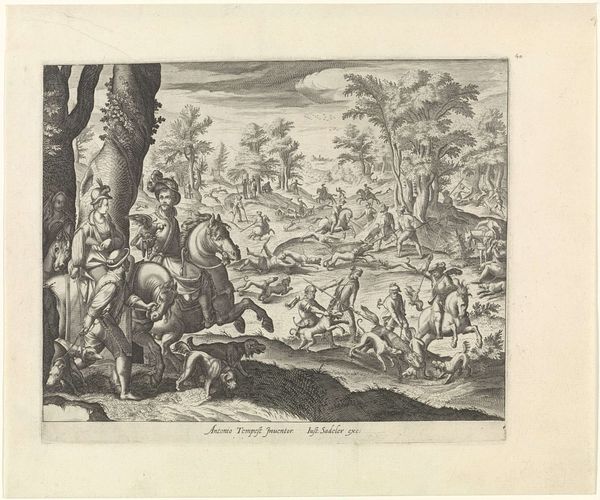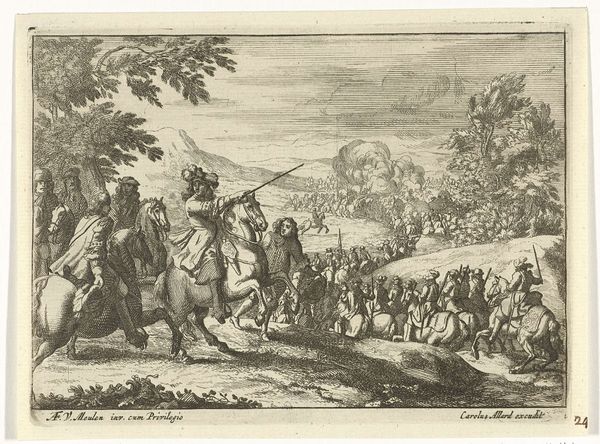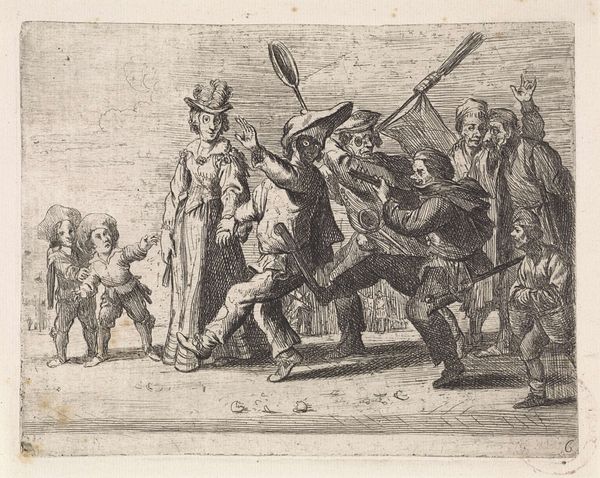
drawing, etching, ink, engraving
#
drawing
#
neoclacissism
#
narrative-art
#
etching
#
caricature
#
figuration
#
ink
#
history-painting
#
engraving
Dimensions: height 324 mm, width 396 mm
Copyright: Rijks Museum: Open Domain
Curator: Ah, the chaos! It’s wonderfully terrible. It’s almost slapstick, in a very dark, historical way. What are your initial thoughts? Editor: Before us, we have Johann Heinrich Ramberg's "De Voorstelling", created between 1787 and 1788. The Rijksmuseum is its home now. But looking closer, I can't help but contextualize it against the backdrop of late 18th-century political tensions. Curator: Definitely! Political turmoil, you say? You can almost feel it, can't you? Even without knowing anything, I'd bet this artwork is social commentary, because those cartoon-y faces and the very dynamic composition gives me an impression of… upheaval, maybe. The poor guys cowering from the sword? What's the socio-political narrative Ramberg trying to paint, here? Editor: Absolutely. This piece functions as a satirical take on political unrest during that period in the Netherlands, specifically the events of September and October, the piece’s caption reveals. It uses caricature to depict opposing political factions and their struggles for power, echoing the deep-seated conflicts between the Patriots and Orangists, highlighting the vulnerabilities of civilian populations caught in political crossfire. Curator: Oh, tell me about these so called factions! "Patriots" and "Orangists"? Feels like some kind of college sports rivalry turned very sour. Also the man on the horseback wielding the sword? Very theatrical pose! Almost heroic… but I get the sense that we're not exactly meant to *cheer* for him, right? Editor: Exactly. The Orangists favored the stadtholder, Prince William V of Orange, clinging to monarchical power. The Patriots advocated for more democratic governance and challenged the stadtholder's authority, yearning for reforms. Ramberg’s figure on horseback isn't celebrated; instead, he symbolizes brute force, highlighting authoritarian excess that suppresses the burgeoning voices demanding liberty and change. Curator: Ah, right. I find that such work becomes… incredibly crucial as a time capsule. Beyond its immediate purpose, you know? We get a visceral, raw, sometimes amusing glimpse into real human issues, not just from stuffy old textbooks. So cool! Editor: Indeed! And it encourages us to explore history not merely as a series of dates, but through nuanced struggles, complexities, and, notably, the deeply subjective ways these events get framed through artistic expression. Curator: Yes! I wonder if he was hoping it would actually incite change, or just maybe, just maybe, help someone feel a little less alone in their own frustrations. Anyway, this has certainly put things into a new perspective for me. Thanks! Editor: Thank you, this piece not only visualizes a critical juncture in Dutch history, but it also compels us to examine how art intersects with social and political change, influencing how we perceive and understand such moments today.
Comments
No comments
Be the first to comment and join the conversation on the ultimate creative platform.

